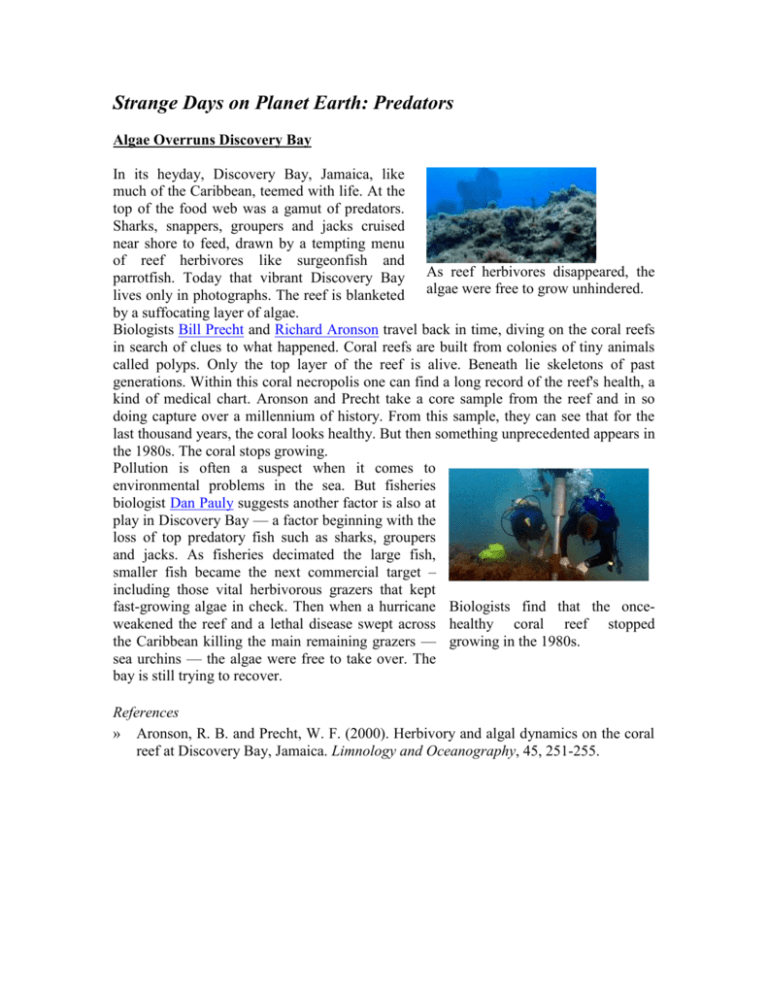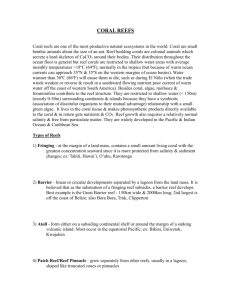Discovery Bay: Algae Overruns & Predator Loss
advertisement

Strange Days on Planet Earth: Predators Algae Overruns Discovery Bay In its heyday, Discovery Bay, Jamaica, like much of the Caribbean, teemed with life. At the top of the food web was a gamut of predators. Sharks, snappers, groupers and jacks cruised near shore to feed, drawn by a tempting menu of reef herbivores like surgeonfish and parrotfish. Today that vibrant Discovery Bay As reef herbivores disappeared, the lives only in photographs. The reef is blanketed algae were free to grow unhindered. by a suffocating layer of algae. Biologists Bill Precht and Richard Aronson travel back in time, diving on the coral reefs in search of clues to what happened. Coral reefs are built from colonies of tiny animals called polyps. Only the top layer of the reef is alive. Beneath lie skeletons of past generations. Within this coral necropolis one can find a long record of the reef's health, a kind of medical chart. Aronson and Precht take a core sample from the reef and in so doing capture over a millennium of history. From this sample, they can see that for the last thousand years, the coral looks healthy. But then something unprecedented appears in the 1980s. The coral stops growing. Pollution is often a suspect when it comes to environmental problems in the sea. But fisheries biologist Dan Pauly suggests another factor is also at play in Discovery Bay — a factor beginning with the loss of top predatory fish such as sharks, groupers and jacks. As fisheries decimated the large fish, smaller fish became the next commercial target – including those vital herbivorous grazers that kept fast-growing algae in check. Then when a hurricane Biologists find that the onceweakened the reef and a lethal disease swept across healthy coral reef stopped the Caribbean killing the main remaining grazers — growing in the 1980s. sea urchins — the algae were free to take over. The bay is still trying to recover. References » Aronson, R. B. and Precht, W. F. (2000). Herbivory and algal dynamics on the coral reef at Discovery Bay, Jamaica. Limnology and Oceanography, 45, 251-255.











